
Looking for the best things to do in Tbilisi, Georgia? This 2 day Tbilisi itinerary covers everything from ancient churches and historic sulphur baths to trendy cafes and vibrant nightlife. Discover the top attractions, hidden gems and cultural experiences in Georgia’s capital with this complete travel guide to Tbilisi.
2 Days in Tbilisi: The Ultimate Itinerary for Georgia’s Capital
Planning a trip to Tbilisi? This vibrant Georgian capital is a unique blend of old and new. Sophisticated and cool yet steeped in centuries of tradition, Tbilisi offers something for every kind of traveller.
From ancient fortresses and sulphur baths to hands-on cooking classes, charming cafes and buzzing nightlife, there are countless things to do in Tbilisi. With so many attractions and activities to choose from, it can be hard to know where to start.
That’s why I’ve created this ultimate Tbilisi itinerary featuring all my favourite experiences. Read on for the best places to visit if you’re spending 2 days in Tbilisi and how to make the most of your time in Georgia’s capital.
Remember to buy travel insurance for your trip. Call of the World readers receive a 5% discount on Heymondo travel insurance using my link.
2 Days in Tbilisi: What to Expect
Contents: What to See in Tbilisi

Georgia Itinerary: Day 1 in Tbilisi
Start Your Day with a View of Old Tbilisi: Betlemi Street Stairs
One of the most rewarding walks in Tbilisi starts just behind the historical old town. Here, you’ll find the Betlemi Street Stairs, a winding route of steep stone steps that weave through narrow lanes and local houses. The climb takes you through one of the most atmospheric parts of the city, offering glimpses of colourful balconies, hidden courtyards and everyday life in old Tbilisi.
The Betlemi Quarter is one of the oldest parts of Tbilisi, with roots dating back to the Middle Ages. It was once home to a mix of Armenian and Georgian communities, and many of the buildings still reflect this layered cultural heritage.
At the top of the stairs, you’ll reach Upper Betlemi Church, a peaceful Georgian Orthodox church with stunning views over the rooftops of the city. It’s a serene spot to catch your breath and take in the surroundings. The climb is fairly steep, but it doesn’t take long and you’ll be rewarded with some of the best panoramic views in Tbilisi.

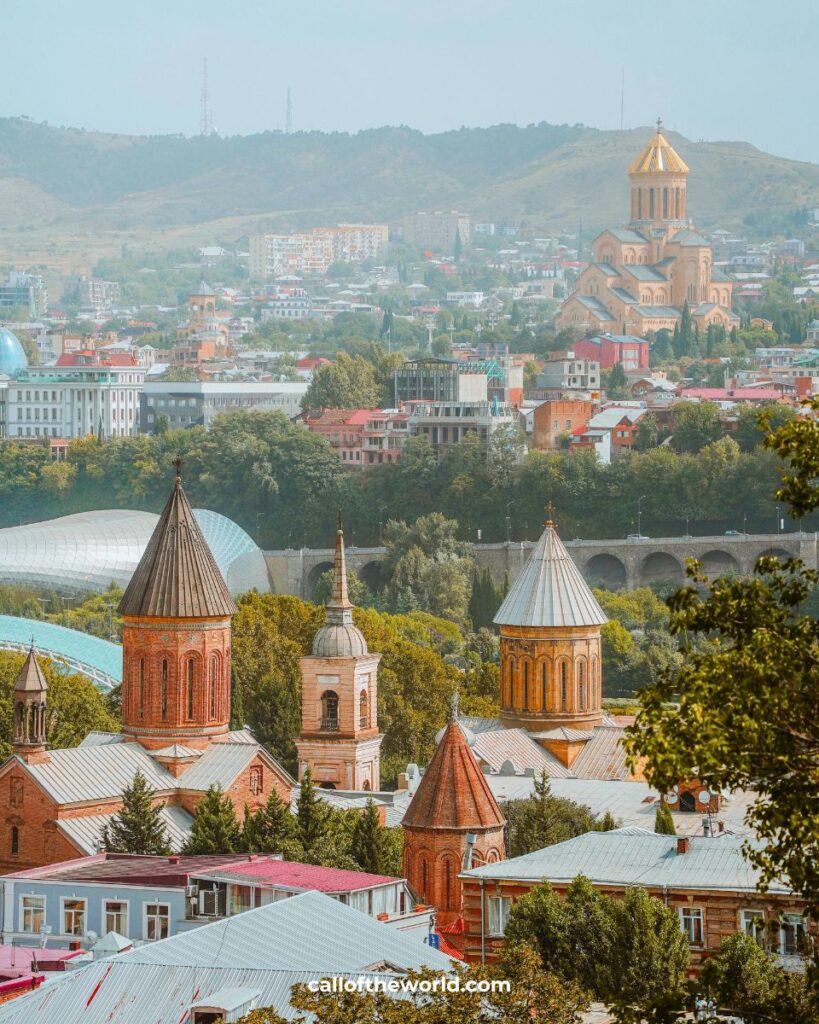
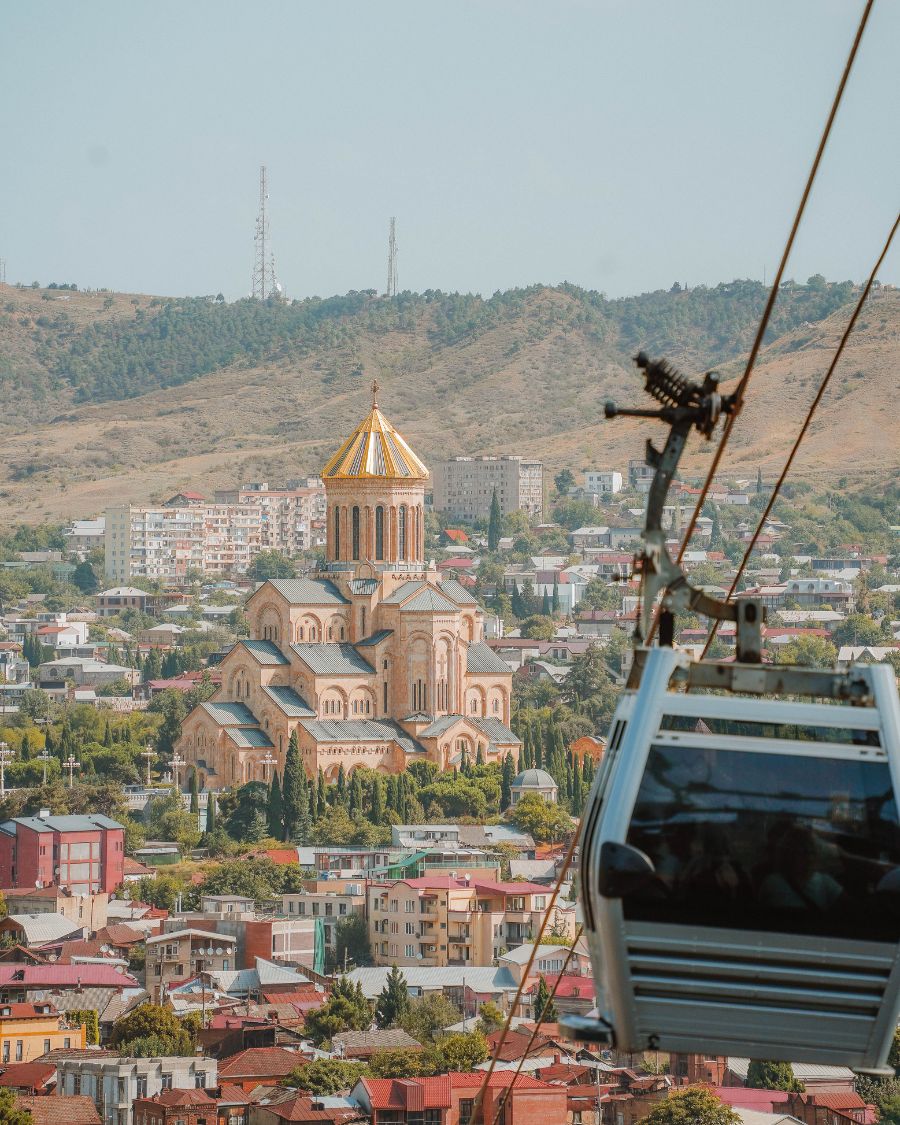
Upper Betlemi Church itself dates back to the 18th century and has undergone several restorations over the years, surviving fires, invasions and Soviet-era neglect.
If you’re not keen on climbing, you can also reach the top by taking the Tbilisi cable car from Rike Park. The ride offers incredible aerial views and drops you off right near Narikala Fortress and the Mother of Georgia statue, both of which are must-see landmarks.
Whether you walk or take the cable car, exploring this area is one of the best things to do in Tbilisi. It gives you a real sense of the city’s charm, history and layout from above.
No time restriction (daylight recommended) | free-of-charge

Mother of Georgia: Tbilisi’s Iconic Statue
Towering above the city on Sololaki Hill, the Mother of Georgia statue (known locally as Kartlis Deda) watches over Tbilisi with quiet strength. This striking aluminium figure of a woman in traditional Georgian dress has become one of the most recognisable landmarks in the country.
Erected in 1958 to mark Tbilisi’s 1500th anniversary, the statue stands as a proud symbol of Georgian identity. In one hand, she holds a bowl of wine to greet friends with hospitality. In the other, she carries a sword to defend against enemies: a powerful reflection of the country’s spirit.
The viewpoint beside the statue offers sweeping views of the old town, the river and the hills beyond. Whether you climb the Betlemi Street Stairs or take the cable car from Rike Park, a visit to Kartlis Deda is one of the best things to do in Tbilisi.
Psst…Instead of doing this all by yourself, you can book onto a tour of the old city that also includes wine tasting at the end!
No time restriction (daylight recommended) | free-of-charge

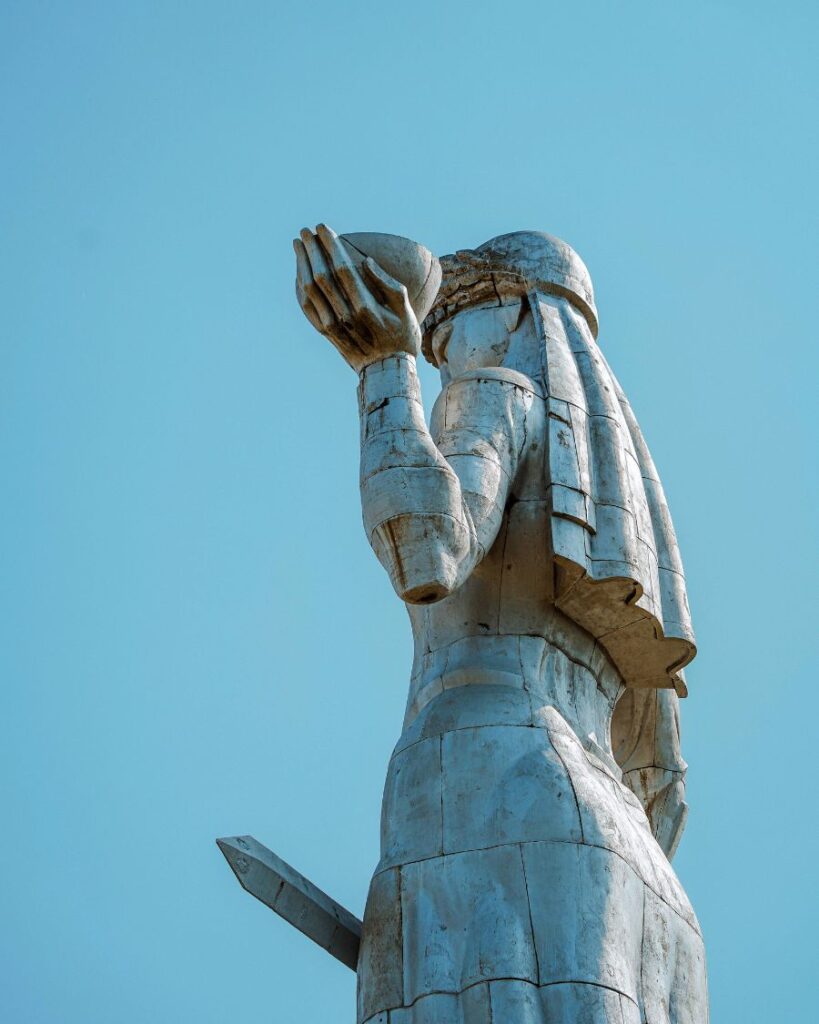
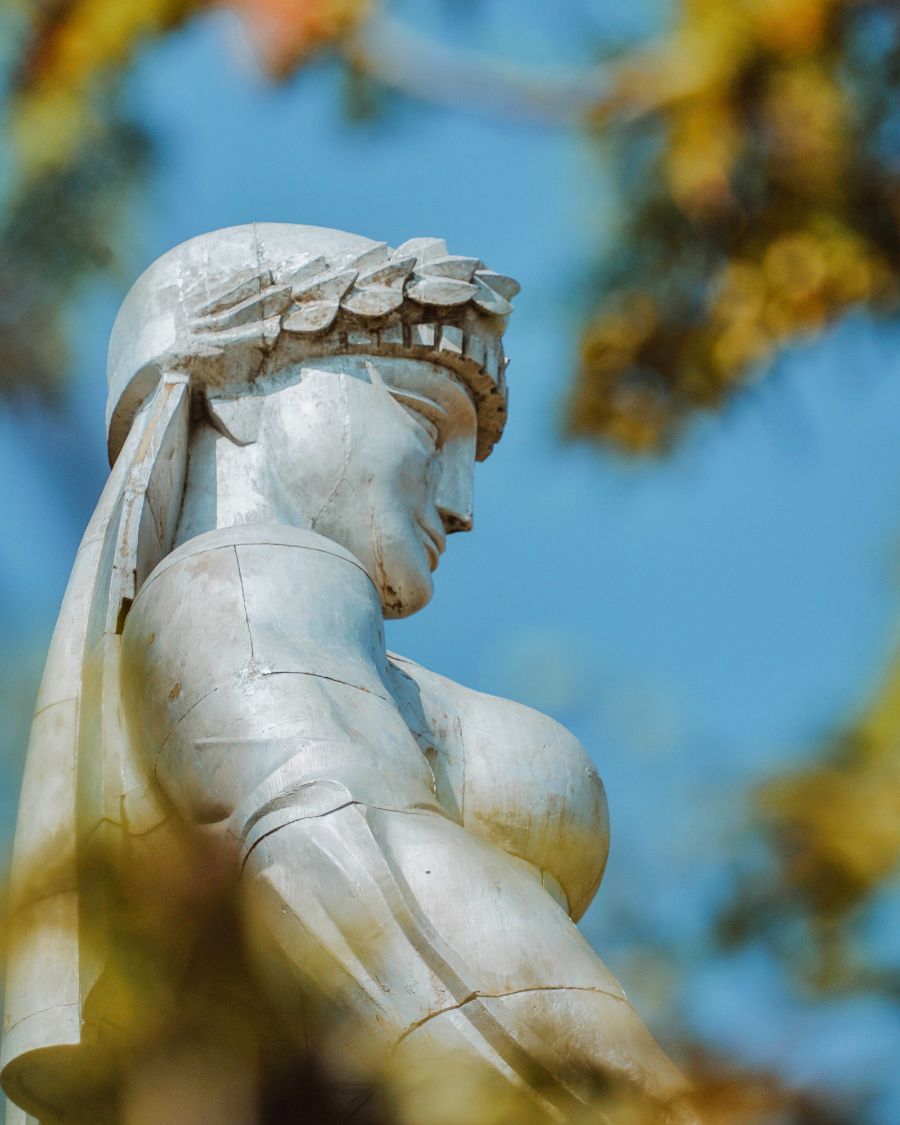
Breakfast in Tbilisi: Where to Refuel After the Morning Climb
After taking in the views from the Betlemi Street Stairs and the Mother of Georgia statue, it’s time to refuel. Luckily, Tbilisi has a thriving cafe culture that makes it easy to find a cosy corner for a leisurely breakfast or a bit of laptop time (I’m looking at you digital nomads!).
Tbilisi is very much a city of night owls. Most locals stay out late, so mornings tend to start slowly. Many cafes and restaurants don’t open until 10am or later, which makes breakfast more of a late-morning ritual than an early affair. That said, once things get going, the options are fantastic.
I enjoyed a traditional Georgian breakfast called Chizhi Bizhi at Chaduna: a hearty mix of tomatoes, onions and eggs cooked in a clay pot. It’s warm, savoury and perfect after a morning walk.
Another favourite of mine is Entrée, a Georgian bakery chain with several branches across the city. The one on Davit Aghmashenebeli Avenue is especially convenient and serves fresh coffee, colourful salads and tasty sandwiches. Their beetroot bowl and salmon and avocado in black bread rolls are surprisingly good for a chain.
Whether you’re working remotely, people-watching, immersed in a good book or just easing into the day, Tbilisi’s cafes offer the perfect setting to unwind before your next adventure. Unfortunately 2 days in Tbilisi is not enough time to sample all the delicious snacks available, but you can make a good start!
Most places open after 10am at the earliest | prices vary
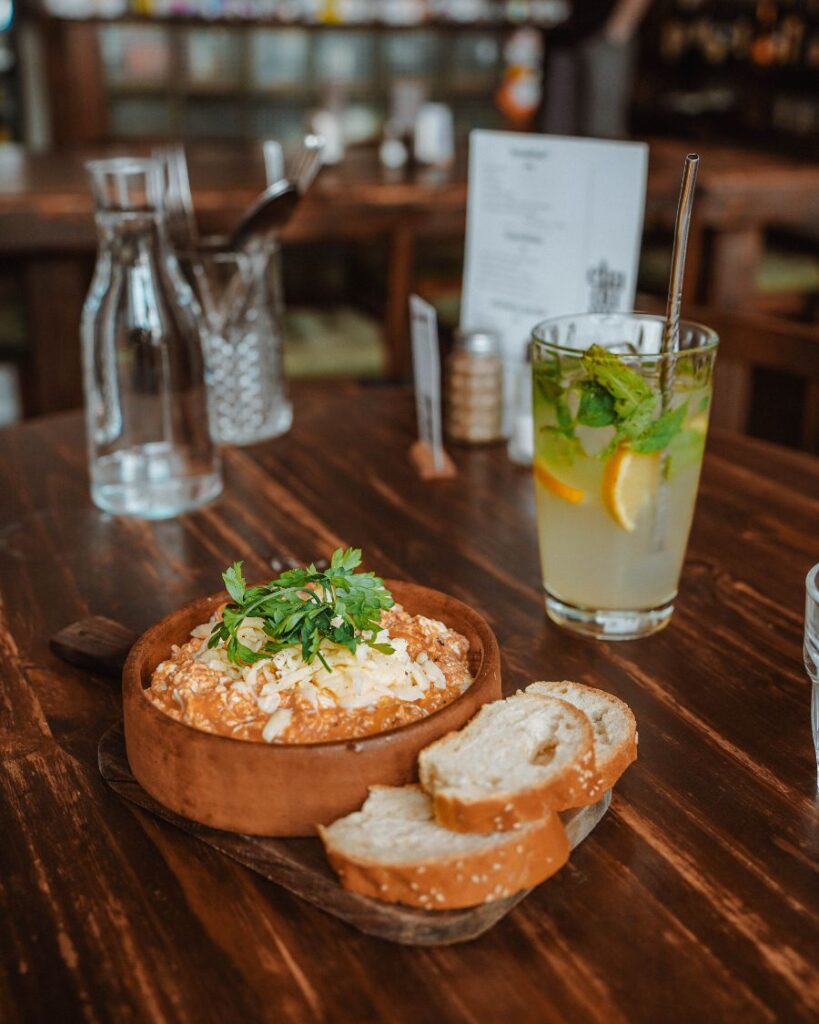
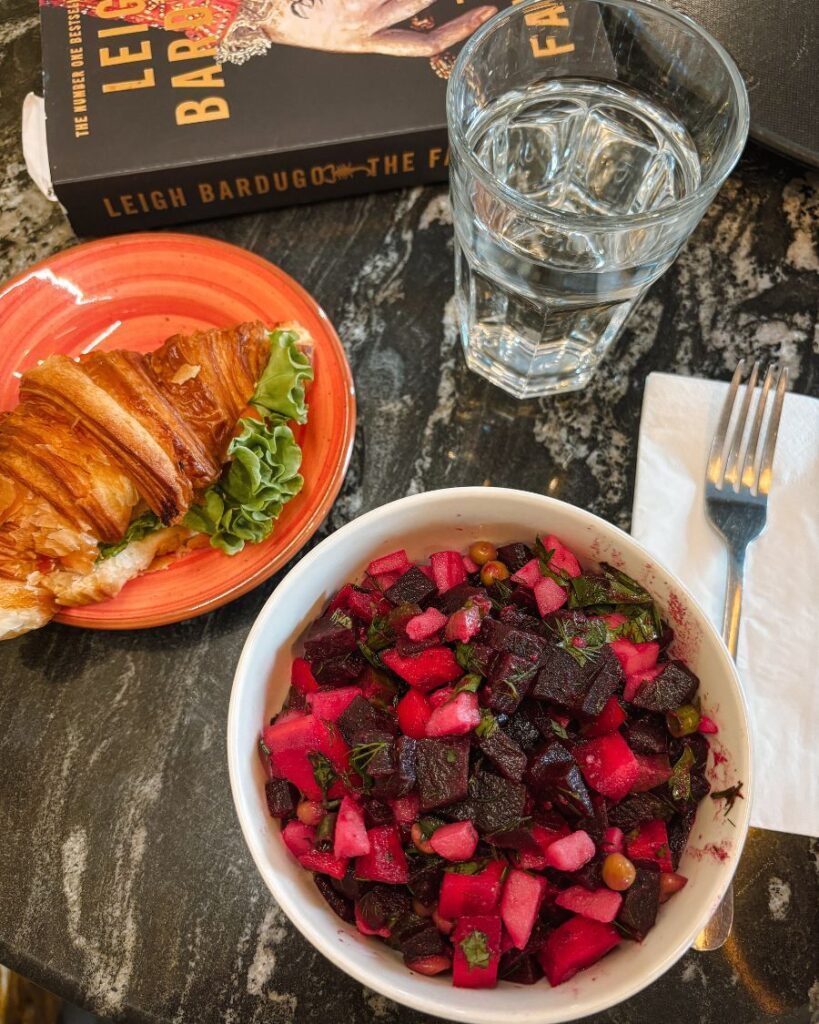
Rike Park and the Bridge of Peace
Tbilisi’s architecture tells the story of its complex past. From ornate Silk Road-era facades to stark Soviet brutalism and grand Stalinist designs, the city is a fascinating mix of styles. Nowhere is this contrast more striking than in Rike Park.
Located along the banks of the Kura River, Rike Park is a peaceful green space in the centre of the city. It’s a popular spot for locals and visitors alike to relax, stroll or take the cable car up to the Mother of Georgia statue.
One of the park’s standout landmarks is the Bridge of Peace: a striking steel and glass structure that curves elegantly across the river. Designed by Italian architect Michele De Lucchi, the bridge opened in 2010 and has since become a symbol of modern Tbilisi. Its contemporary design stands out against the surrounding historic buildings, making it a favourite subject for photographers and architecture lovers.
If you’re particularly interested in the city’s built environment, consider booking a guided architecture tour. Brutal Tbilisi: Urban exploration and untold stories is a fascinating option that takes you deep into the city’s Soviet past, exploring often-overlooked landmarks and the stories behind them.
No time restriction (daylight recommended) | free-of-charge

Admire Tbilisi’s Street Art Scene
Tbilisi is one of the most genuinely creative cities I’ve visited. Art, design and self-expression run deep here. You’ll see it everywhere: from beautifully restored interiors and handmade crafts to bold modern architecture. But perhaps the most striking expression of the city’s creativity is its street art.
Almost every wall, tunnel and stairwell in Tbilisi seems to double as a canvas. Layers of graffiti, murals and stencils give the city a gritty, lived-in charm. One of the best places to see large-scale street art is inside the tunnels beneath the Nikoloz Baratashvili Bridge. These passageways are covered in vibrant, often thought-provoking artwork that feels more like a hidden gallery than a public walkway.
Another hotspot is Fabrika, a former Soviet sewing factory turned creative hub and hostel. Its walls are plastered with murals, tags and colourful pieces by both Georgian and international artists. The area around Fabrika is packed with cafes, galleries and co-working spaces, making it a great place to spend a few hours soaking up the city’s creative energy.
If you love street art or urban photography, exploring these spots is one of the best things to do while spending 2 days in Tbilisi.
No time restriction (daylight recommended) | free-of-charge

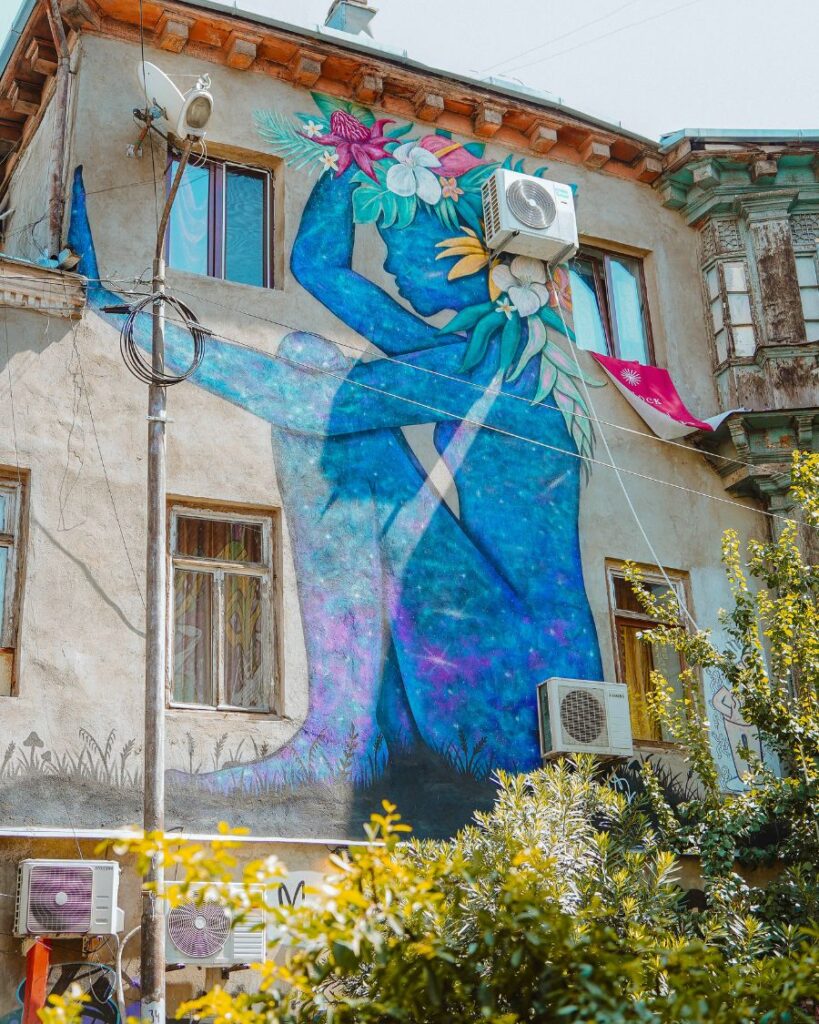

Chreli-Abano Sulfur Baths: Tbilisi’s Most Beautiful Traditional Bathhouse
After a full day of exploring hilly streets and historic landmarks, there’s no better way to unwind than with a visit to one of Tbilisi’s famous sulphur baths. The city is built on natural hot springs, and bathing has been part of local culture for centuries. It’s what Tbilisi is best known for, and no trip to Georgia’s capital would be complete without experiencing it.
Chreli-Abano is one of the most iconic sulphur baths in Tbilisi. With its stunning Persian-style facade, you might mistake it for a mosque or temple. Covered in intricate blue tiles, this historic bathhouse sits right in the heart of Tbilisi’s old town.
It’s a must-see whether you’re planning to soak in the mineral-rich water or simply admire the architecture. The natural sulphur baths are famous for their healing properties and have been a part of local life for centuries. If you’re looking for unique things to do in Tbilisi, Chreli-Abano deserves a spot on your itinerary. I also find it a great way to unwind at the end of a long day of walking!
Read my more detailed post about how to visit these amazing baths here: How to Visit the Chreli-Abano Sulfur Baths, Tbilisi, Georgia
9am — 11pm daily | ₾150 – 600 per room (cheaper if sharing)


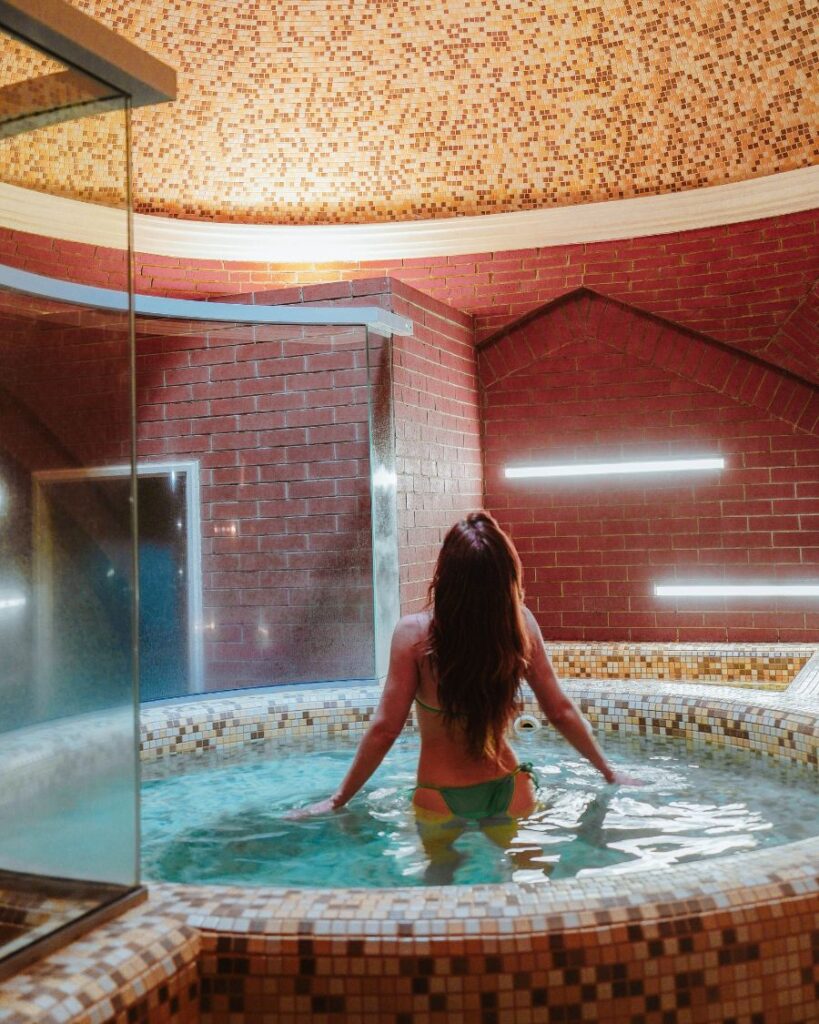
Eat Khachapuri and Other Traditional Dishes
Georgian cuisine is to die for. I’ve travelled to a lot of countries, but Georgia is easily one of my top contenders for best food in the world. Rich, comforting, full of flavour, and often very affordable. You’ll find excellent fine dining in Tbilisi, but some of the best dishes are served in simple, unpretentious places.
Start with khachapuri, Georgia’s famous cheese-filled bread. There are several regional varieties, but the Adjarian version (with an egg and a slab of butter on top) is a must-try. Then there’s khinkali: juicy soup dumplings filled with spiced meat or mushrooms. And then there’s hearty stews like chakapuli and lobio. Tasting tours are a popular way of sampling as many dishes as possible.
One of my favourite hidden gems is Ghebi, a no-frills basement restaurant where the food is the star. It’s nothing fancy. Expect simple decor and a mostly local crowd of men drinking beer. But the portions are generous, the prices are low and the staff are genuinely welcoming.
For something a little more refined, try Shavi Lomi (which means The Black Lion). Tucked away behind a discreet painted door, this beautifully designed restaurant serves up a creative twist on traditional Georgian dishes. The wine list is excellent, and the cosy courtyard makes it ideal for a leisurely evening.
🌟 If you’re the type who likes to get hands-on, consider booking a Small-Group Khinkali and Khachapuri Cooking Class in Tbilisi for your next day here. You’ll learn how to make your own khinkali and khachapuri. It’s a fun, delicious way to dive into Georgia’s culinary traditions, and you’ll leave with new skills to impress back home.
Restaurants are generally open until late | prices vary
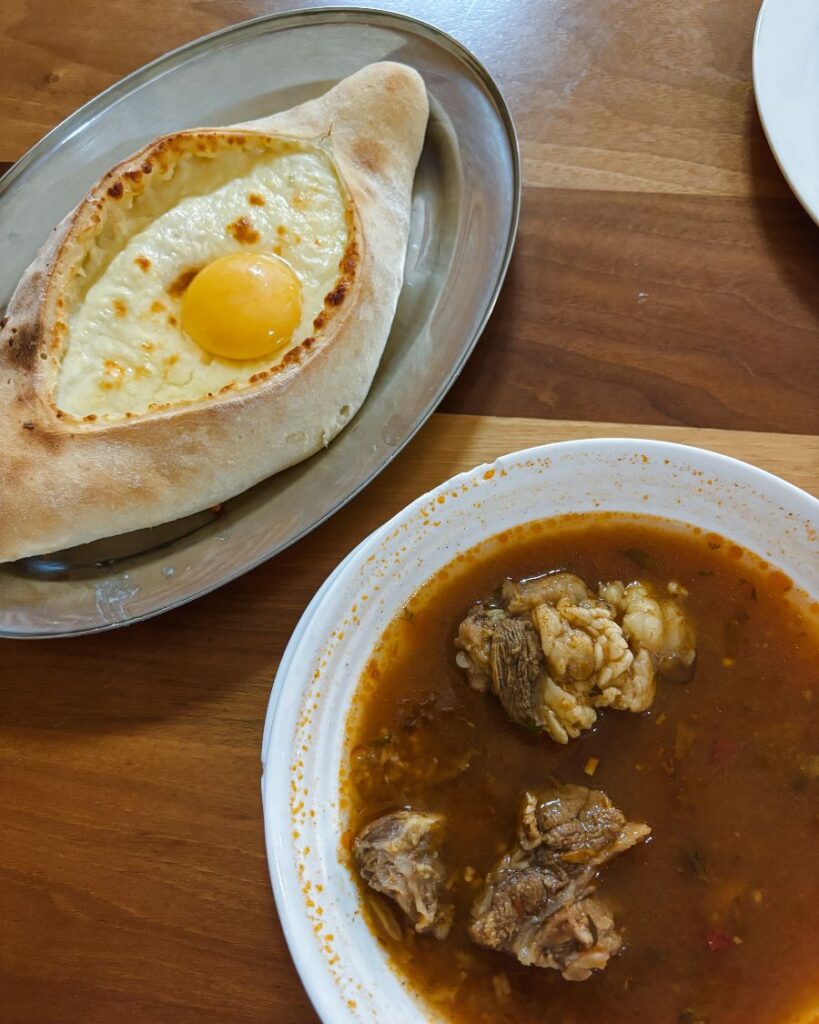
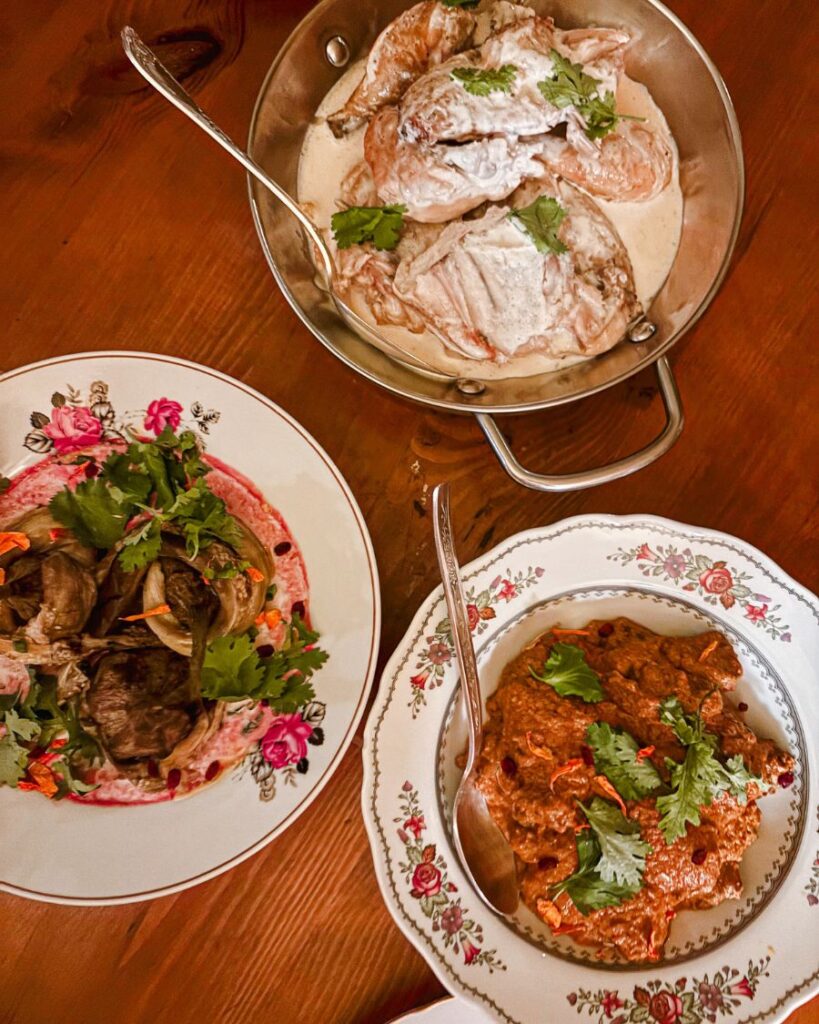
Georgia Itinerary: Day 2 in Tbilisi
Georgian Churches and Traditional Polyphonic Chanting
Tbilisi is home to some of the most beautiful churches in Georgia. These sacred spaces are known for their intricate architecture and spiritual atmosphere. Many are decorated with frescoes, carvings and ancient religious artwork that reflect Georgia’s long and proud Christian heritage.
If you want to experience something truly unique, get up early on a Sunday morning and walk through the old town. As you pass the churches, you’ll often hear the haunting sound of Georgian polyphonic chanting drifting into the streets. This traditional form of sacred music is unlike anything else in the world and is recognised by UNESCO as an Intangible Cultural Heritage.
You’re welcome to attend a church service if you’re curious, just make sure to dress modestly and be respectful of local customs.
One of the best places to experience this is the Anchiskhati Basilica. Dating back to the 6th century, it’s the oldest church in Tbilisi and one of the most peaceful spots in the city. Tucked away in the heart of the old town, this tiny stone church offers a glimpse into Georgia’s ancient past and spiritual traditions.
Services on Sunday. Many also open during the week | free-of-charge
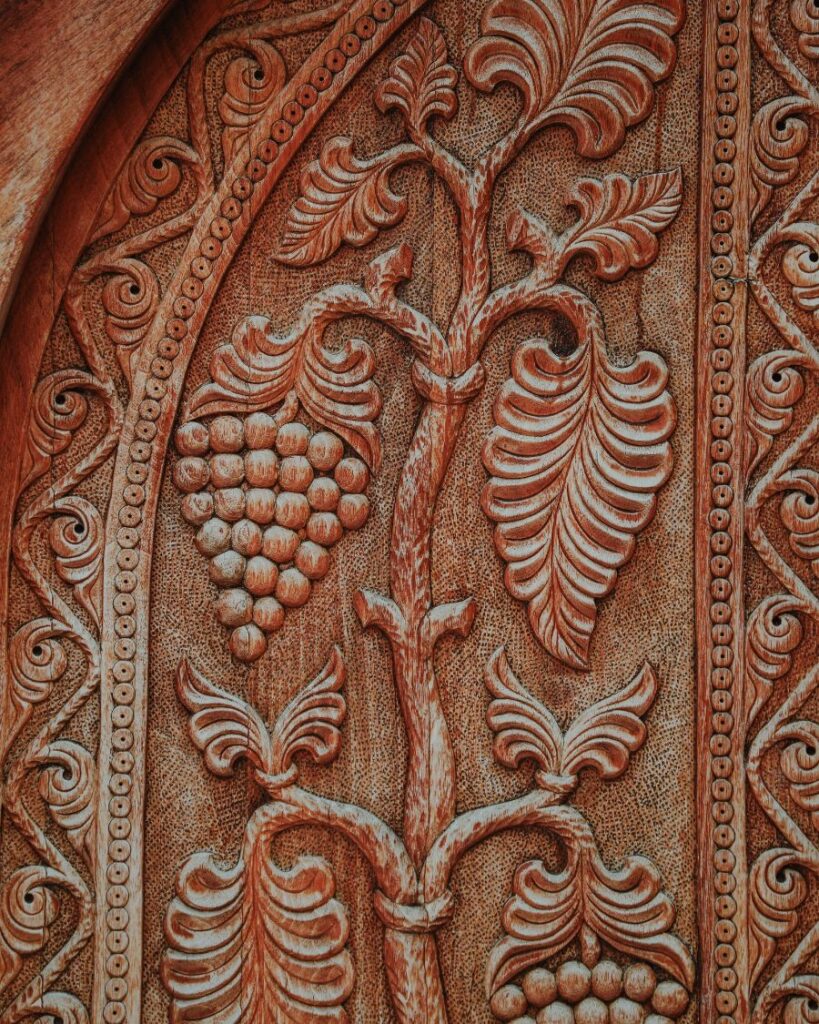
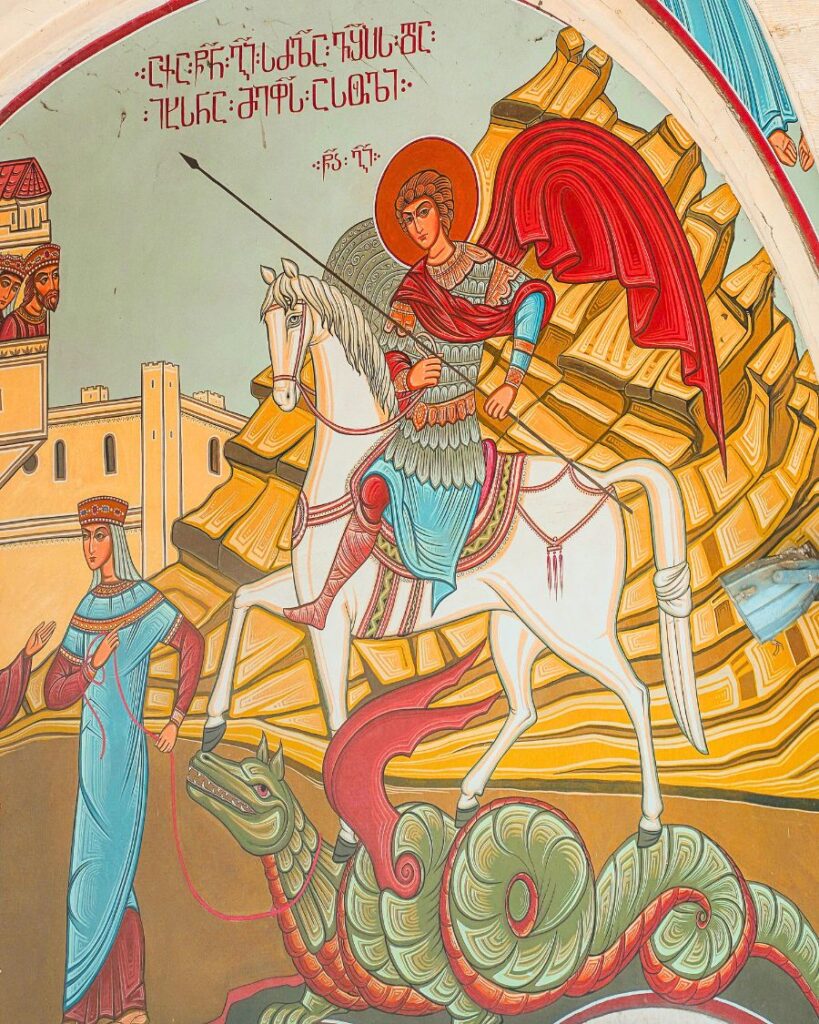
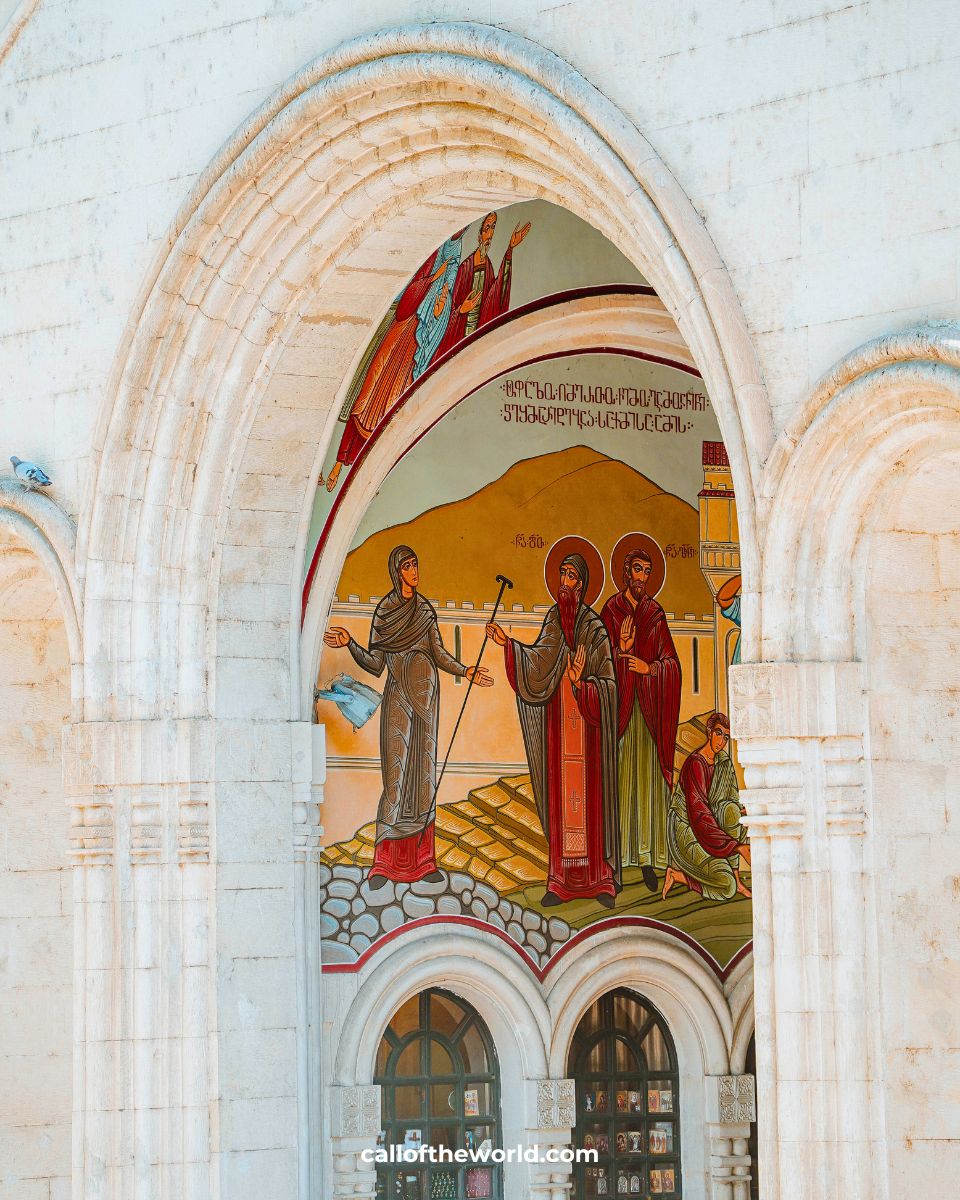
Freedom Square: The Historical and Cultural Heart of Tbilisi
Freedom Square stands proudly in the very centre of Tbilisi, making it one of the most important and well-known landmarks in the Georgian capital. At its centre is the impressive gold statue of St George slaying the dragon, a powerful symbol of bravery and protection that resonates deeply with Georgian culture and history.
This historic square was originally called Erivan Square but was renamed Freedom Square in 1918, following the establishment of the First Georgian Republic after the collapse of the Russian Empire. Since then, it has remained a focal point for political events, celebrations, and demonstrations throughout Georgia’s modern history.
Freedom Square is surrounded by beautiful architecture, including government buildings, shops, cafes and restaurants, making it a vibrant place full of life and activity. It serves as an ideal base for exploring Tbilisi’s historic old town and nearby attractions such as Rustaveli Avenue, the Opera House, and the sulphur baths district.
Because of its central location, Freedom Square is perfect for those looking to discover the best things to do in Tbilisi on foot. Whether you want to admire the blend of old and new architecture, enjoy Georgian street food, or simply soak up the local atmosphere, this square provides a welcoming starting point.
When spending 2 days in Tbilisi, don’t miss the chance to learn about Georgia’s rich history and culture by stopping at nearby museums and galleries, or by joining a guided walking tour that often begins here.
No time restriction (daylight recommended) | free-of-charge
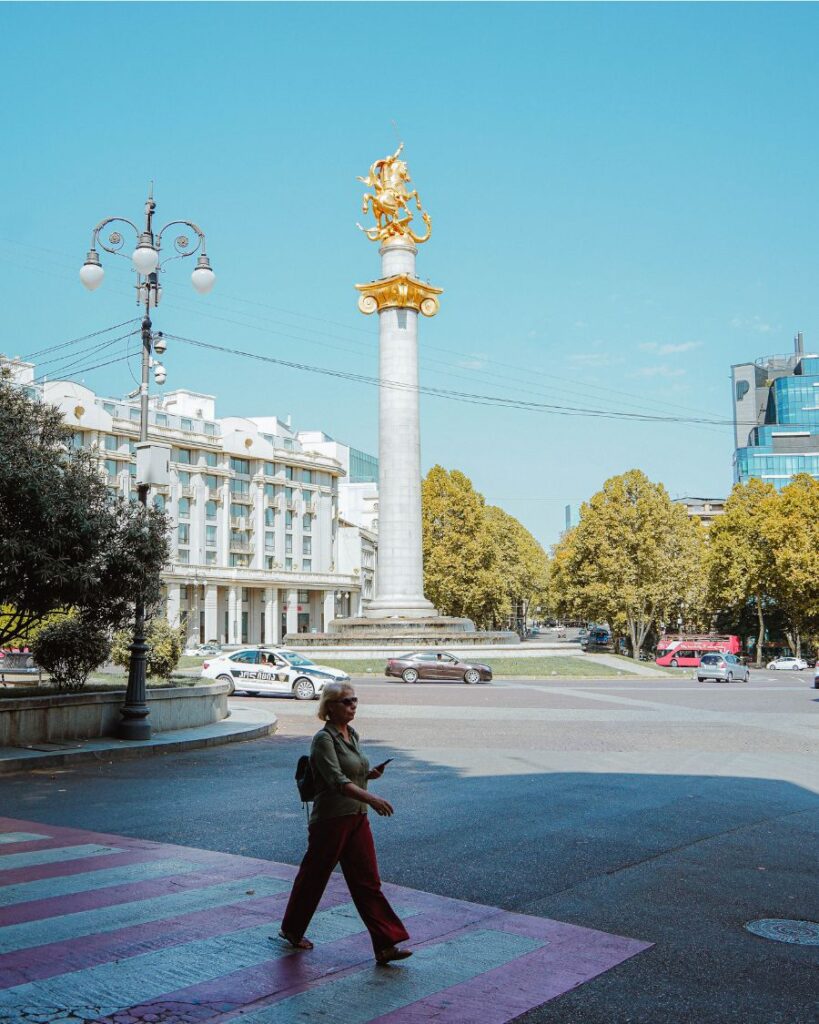
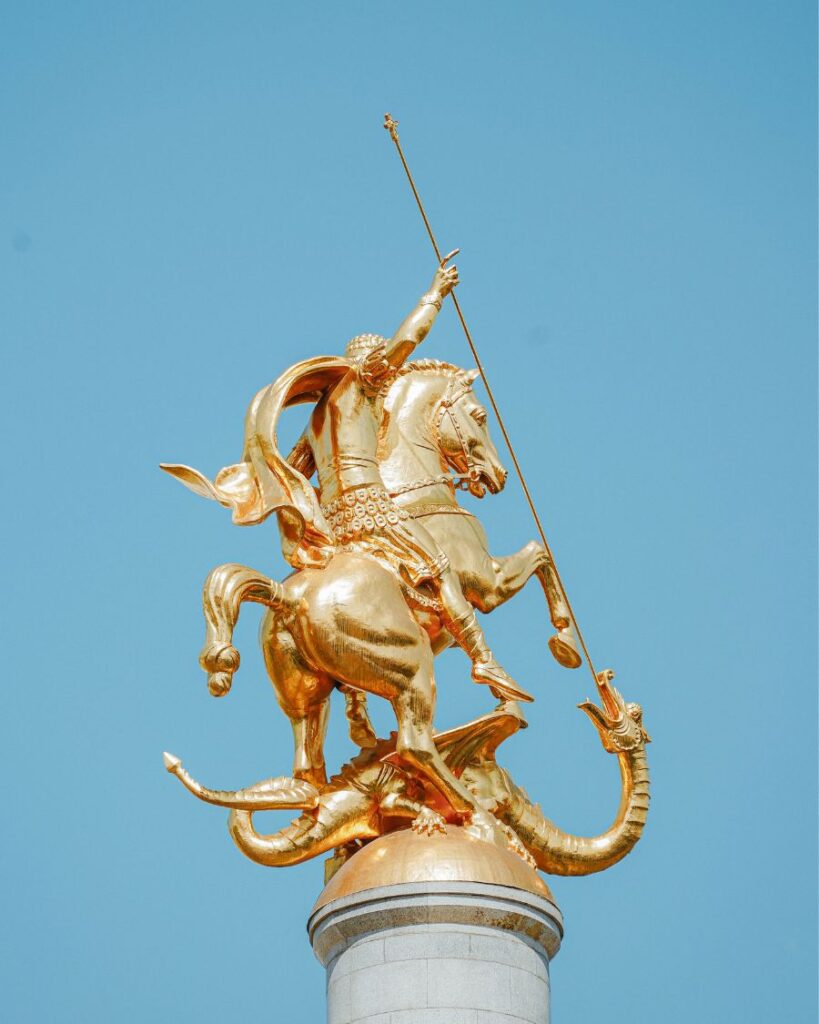
Walk Up the Academy of Arts Steps: A Hidden Artistic Gem in Tbilisi
The Academy of Arts Steps may look like a simple flight of stairs from above, but when you approach from below, you’ll discover a stunning display of ornamental ceramic tiles decorating each riser. This hidden gem is a perfect example of the beautiful details waiting to be uncovered in Tbilisi’s urban landscape.
Each tile is hand-painted and features scenes from The Knight in the Panther’s Skin, Georgia’s beloved medieval epic poem. The intricate artwork not only celebrates Georgian literary heritage but also adds vibrant colour and character to an everyday part of the city.
You can find the steps by strolling along Rustaveli Avenue, one of Tbilisi’s main thoroughfares, and looking for the staircase that leads up to the Tbilisi State Academy of Arts on Griboedov Street. This is a must-see spot for lovers of art, history and culture, offering a unique way to connect with Georgian traditions while exploring the city on foot.
No time restriction (daylight recommended) | free-of-charge
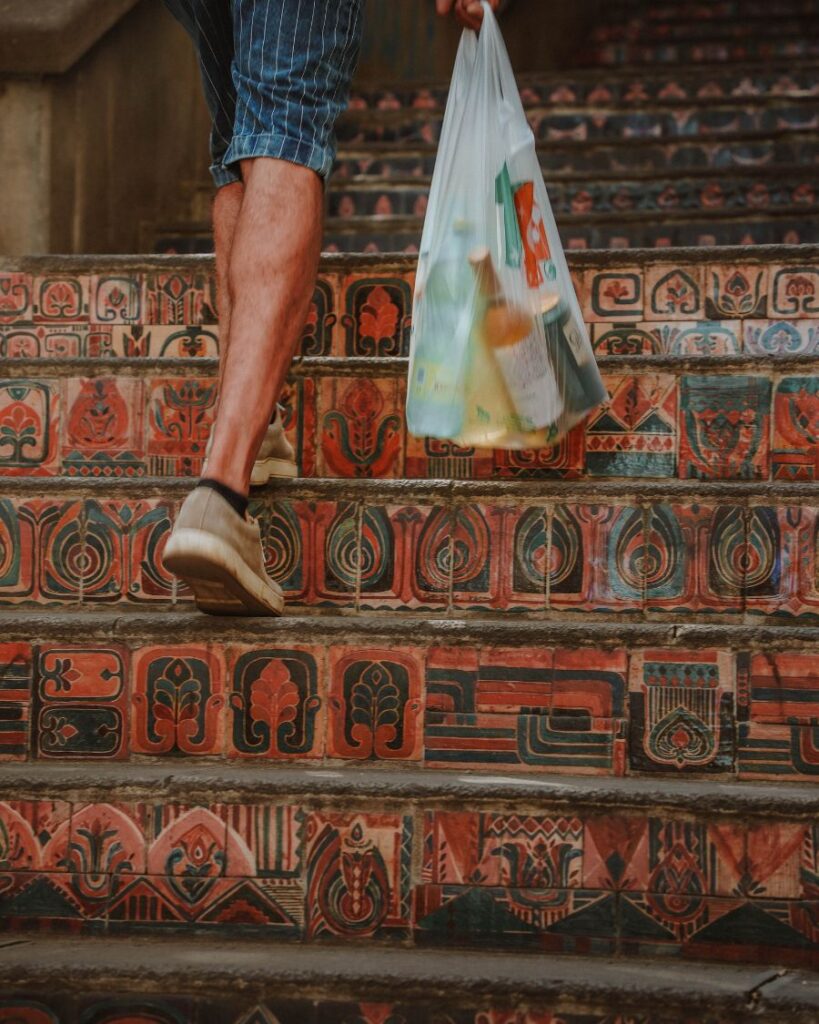
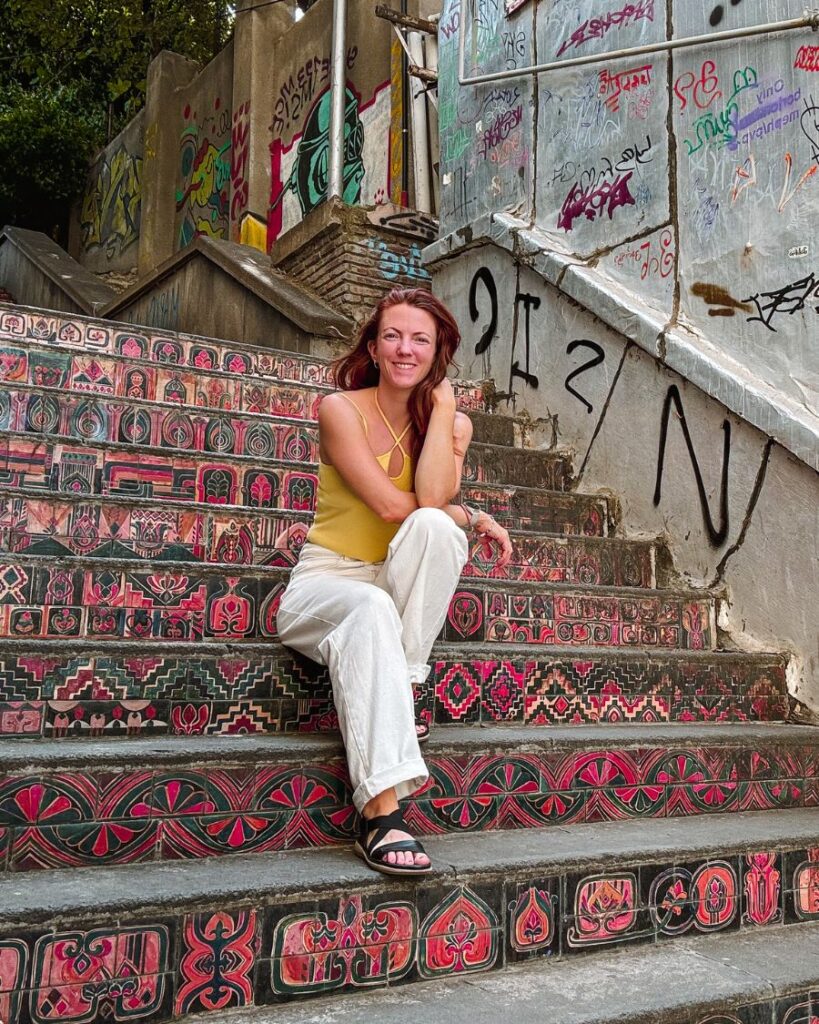
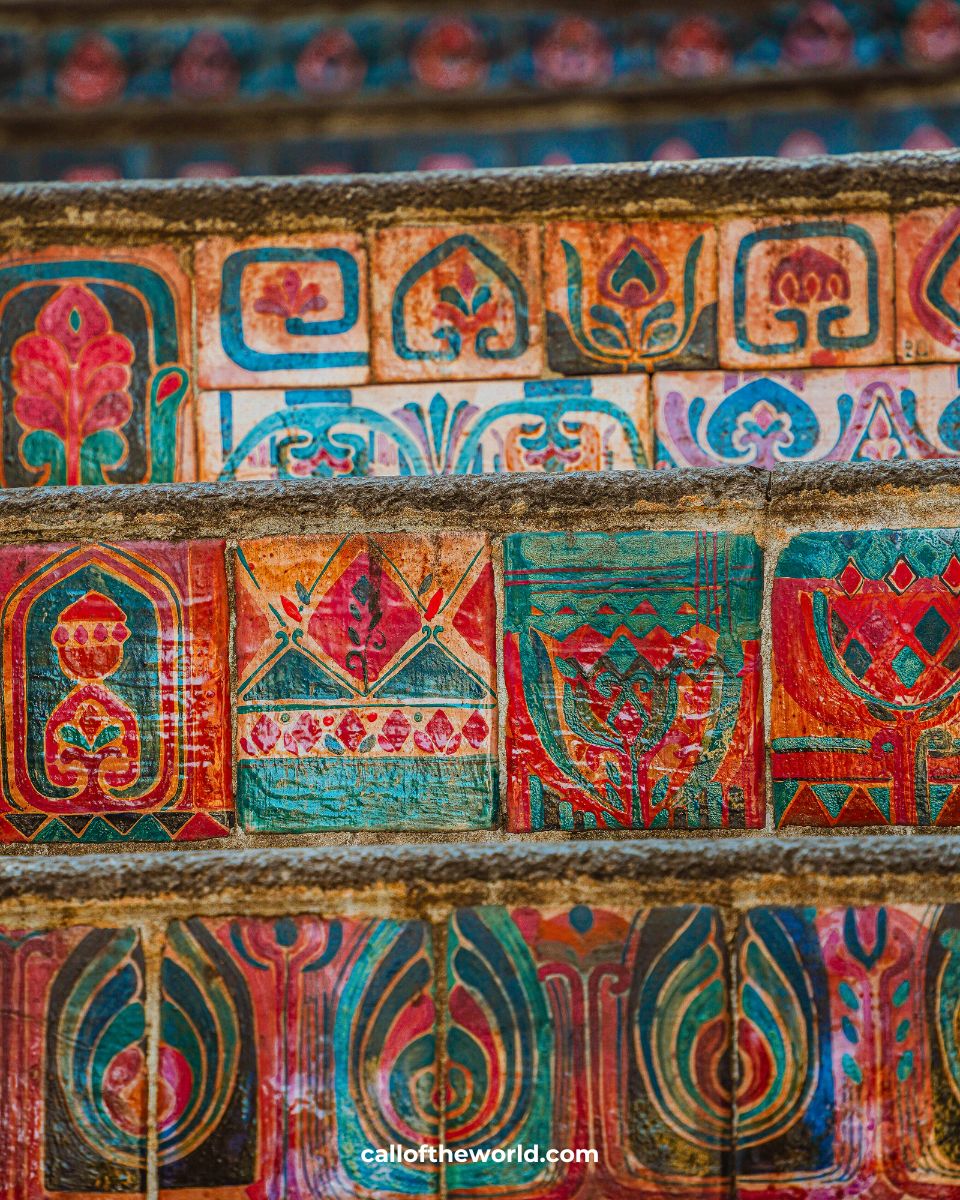
The State Academy of Arts Museum: Explore Tbilisi’s Artistic Heritage
The State Academy of Arts Museum is housed in a stunning 19th-century building that was originally a private mansion belonging to a wealthy Armenian merchant. The architecture alone is a sight to behold, featuring elaborate details and grand design that reflect the opulence of the era.
Inside, the museum boasts extravagant interiors adorned with intricate artwork, showcasing the rich artistic traditions of Georgia. Visitors can explore a fascinating collection of paintings, sculptures and decorative arts that highlight the country’s cultural history.
Located near the Academy of Arts Steps on Griboedov Street, this museum is a must-visit for art lovers and those interested in Tbilisi’s creative scene. It offers a unique glimpse into both Georgian art and the city’s architectural heritage.
11am – 5:30pm, Monday – Friday | ₾8 for Georgian citizens, ₾12 for foreign adults
Dry Bridge Flea Market: Tbilisi’s Treasure Trove for Vintage Finds and Souvenirs
The Dry Bridge Flea Market is a vibrant, sprawling outdoor market that has become a beloved fixture of Tbilisi’s streets. Every day, local stallholders gather here to sell a fascinating mix of items. You can find everything from quirky household knick-knacks and vintage Soviet medals to antique daggers and unique souvenirs.
Whether you are a keen collector, a curious traveller or simply looking for something unusual to take home, the Dry Bridge Flea Market offers a truly authentic shopping experience in the heart of Tbilisi. The market stretches along Dry Bridge itself, as well as underneath the bridge and in the nearby Dedaena Park.
Even if you don’t plan to buy anything, wandering through the stalls is a great way to soak up the local atmosphere and glimpse a side of Georgian culture rich in history and nostalgia.
10am – 5pm daily | free-of-charge, prices of items vary
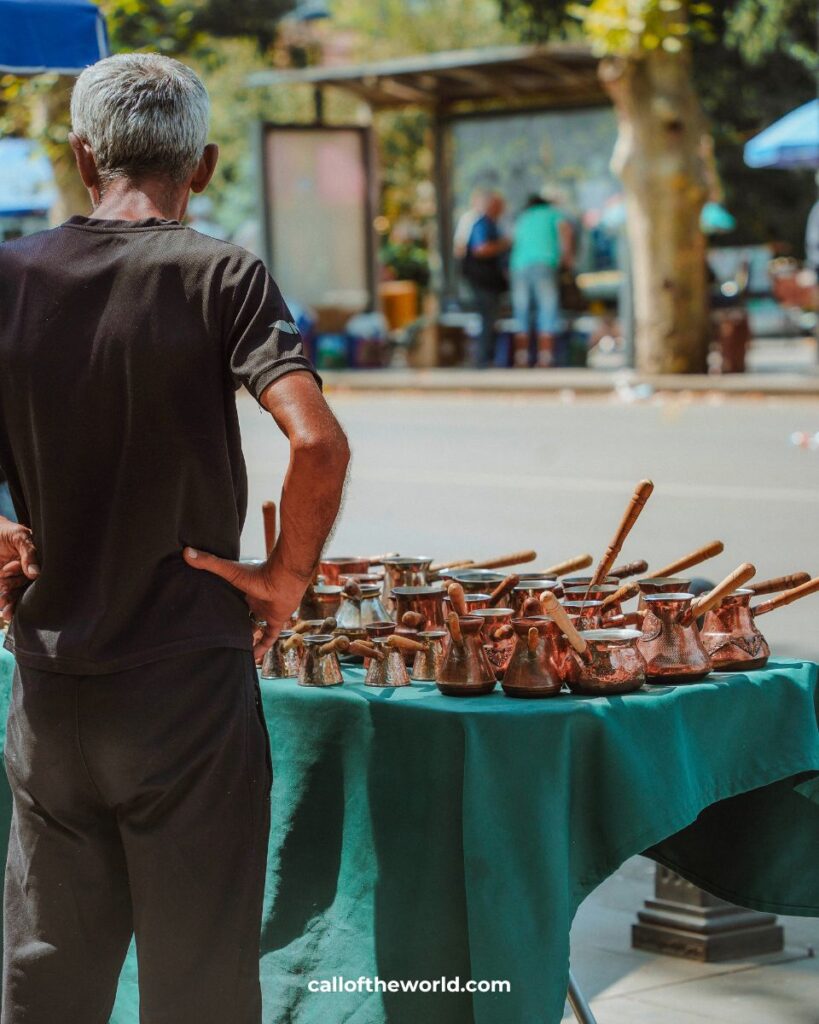
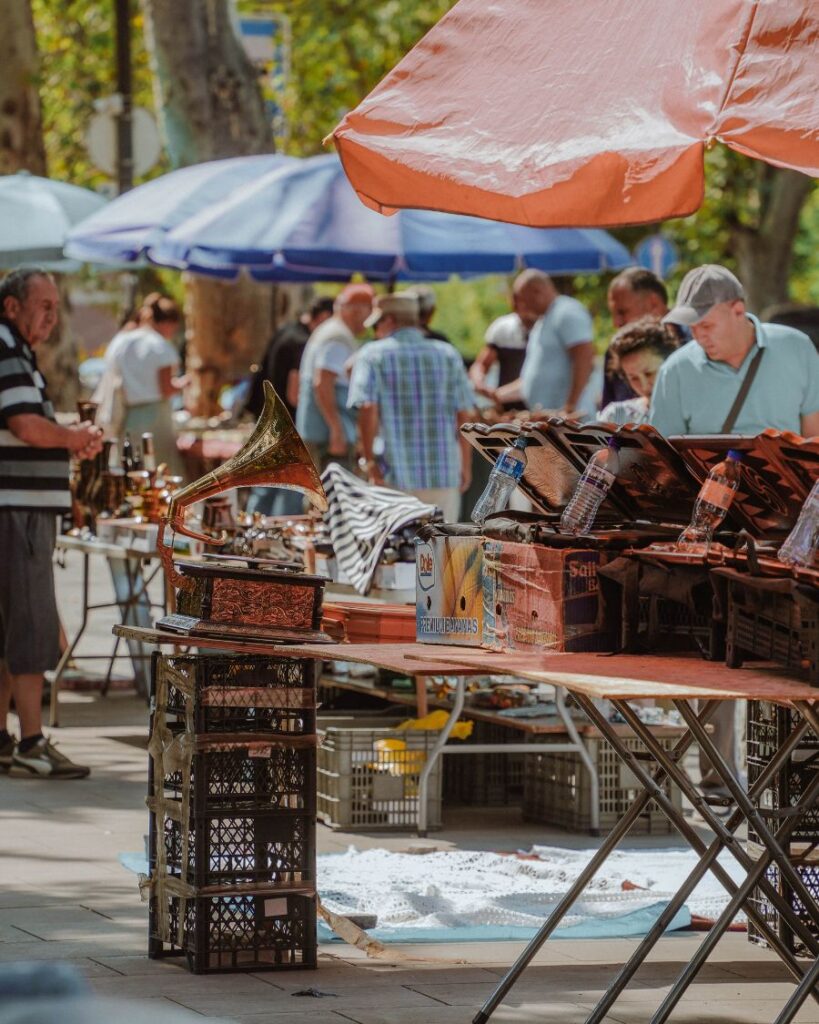

Chill Out with a Coffee or a Drink at Fabrika
This former soviet sewing factory has been successfully rebranded as a creative space. The high-ceilinged factory floor has been transformed into a light-filled co-working space that doubles as a cafe during the day and a bar in the evenings. You could spend all day in this space, which is filled with plants, tables for working, comfy sofas and colourful Georgian rugs.
The rest of the building is now a hostel, so it’s a great place to stay during your 2 days in Tbilisi and meet other travellers. The outside courtyard comes alive at night, full of both Georgians and travellers mingling into the small hours. This is the best place in the city to come if you want to socialise and meet people.
You can book to stay at Fabrika via booking.com. They have both dorms and private rooms.
Open late | drink prices reasonable
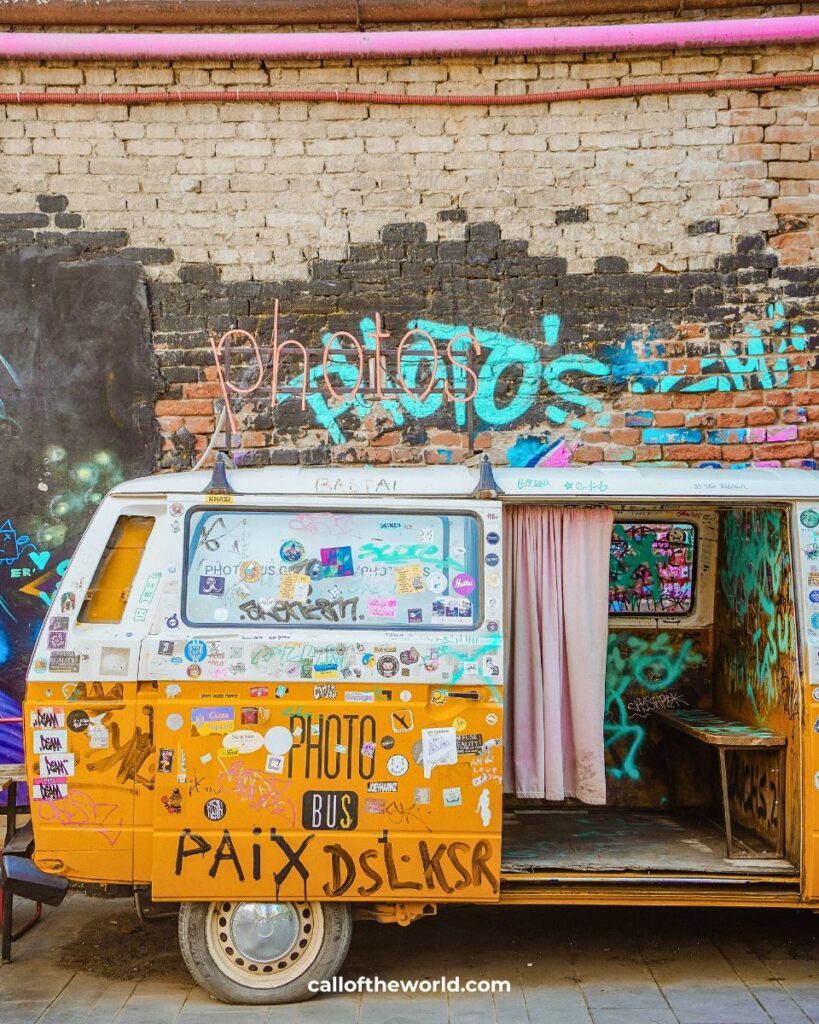
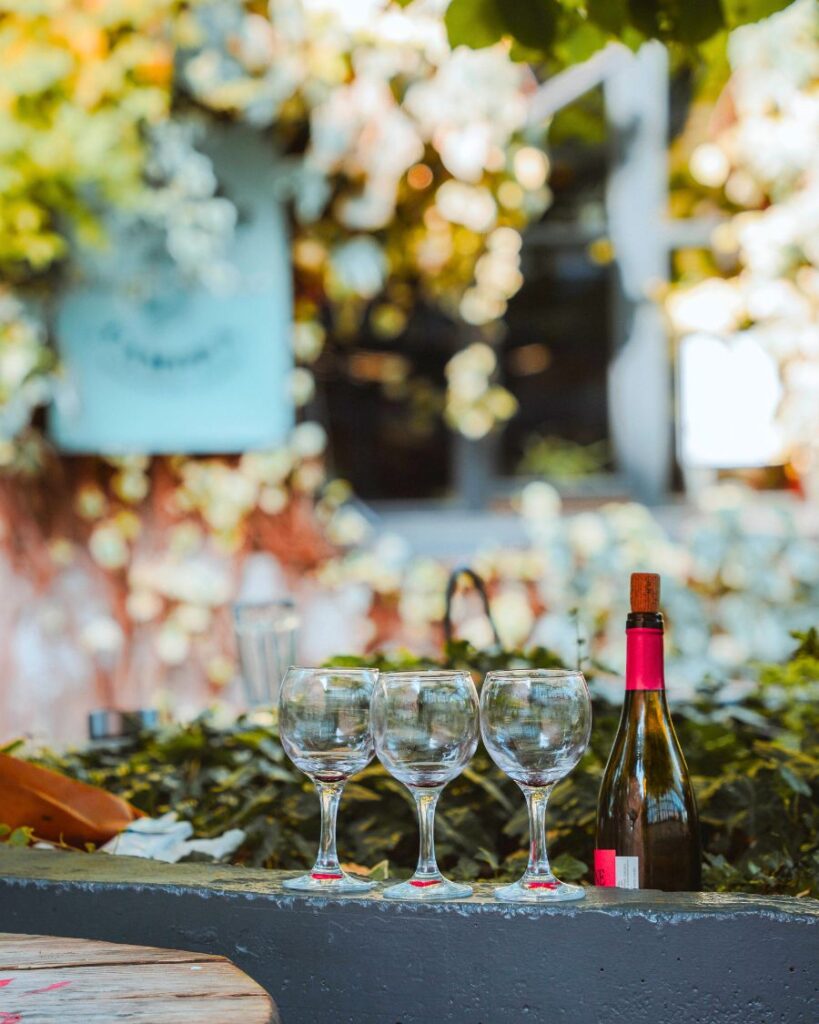
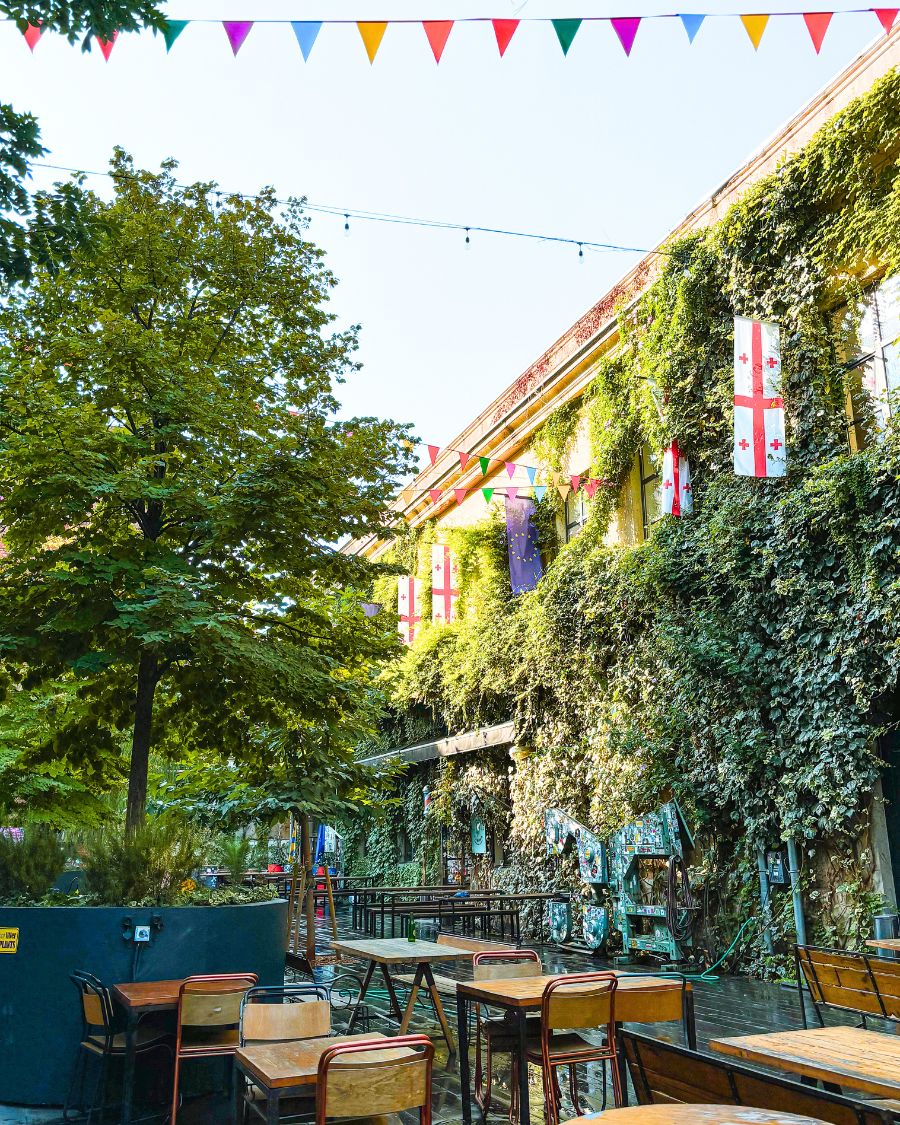
Georgian Wine Tasting: Discover the Birthplace of Winemaking
No trip to Tbilisi is complete without experiencing a Georgian wine tasting. Georgia is often credited as the cradle of wine, with archaeological evidence showing that winemaking has been practised here for over 8,000 years. This ancient tradition is not just a source of national pride, it’s woven into the fabric of Georgian culture.
What sets Georgian wine apart is the traditional method still used in many regions today. Grapes are fermented in large clay vessels called qvevri, which are buried underground. This technique produces bold, distinctive flavours, particularly in the famous amber wines: deep golden wines made by fermenting white grapes with their skins. If you’re a fan of trendy “orange wine”, this is where it all began.
Tbilisi offers plenty of cosy wine bars and dedicated tasting rooms where you can sample a range of varietals, from robust reds like Saperavi to crisp whites and complex amber wines. Visit a 200-year-old wine cellar and learn about the history of winemaking as well as sampling delicious wines and “chacha”, a Georgian spirit. Many tastings include Georgian cheese and snacks, making it a fun and delicious way to learn about the country’s ancient winemaking traditions.
It would be a crime to spend 2 days in Tbilisi without sampling the country’s wine. In fact – when I flew home from Kutaisi airport they even had free wine tasting in the departure terminal!
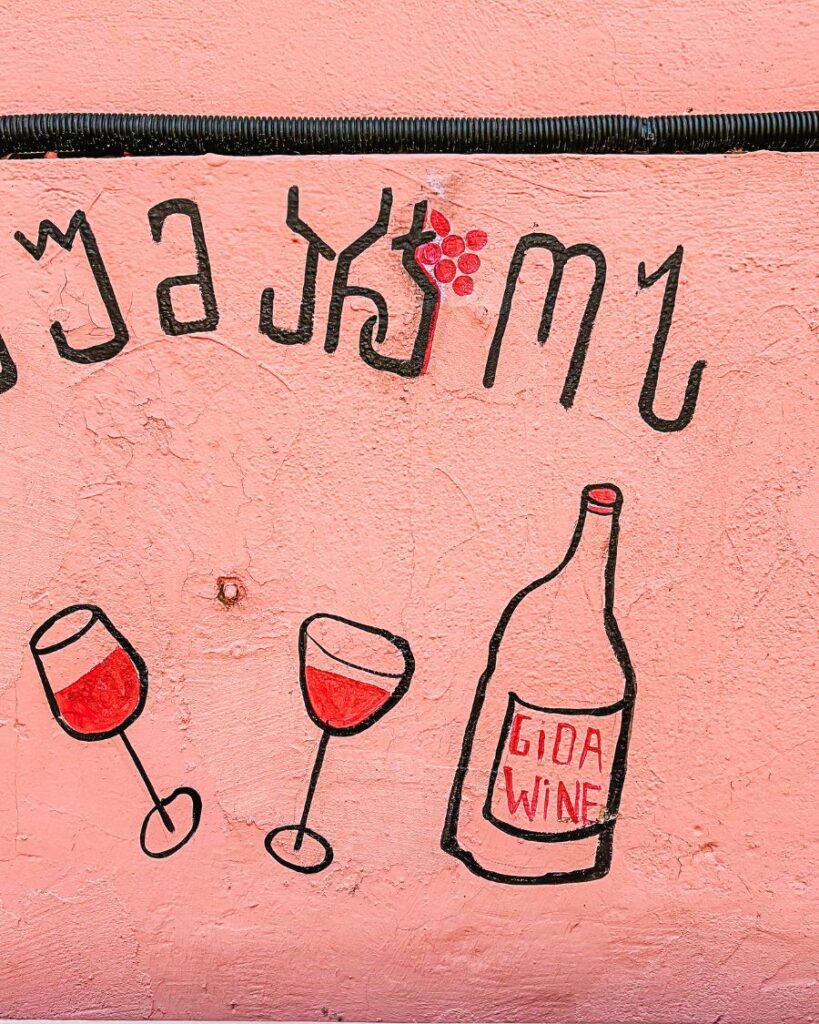
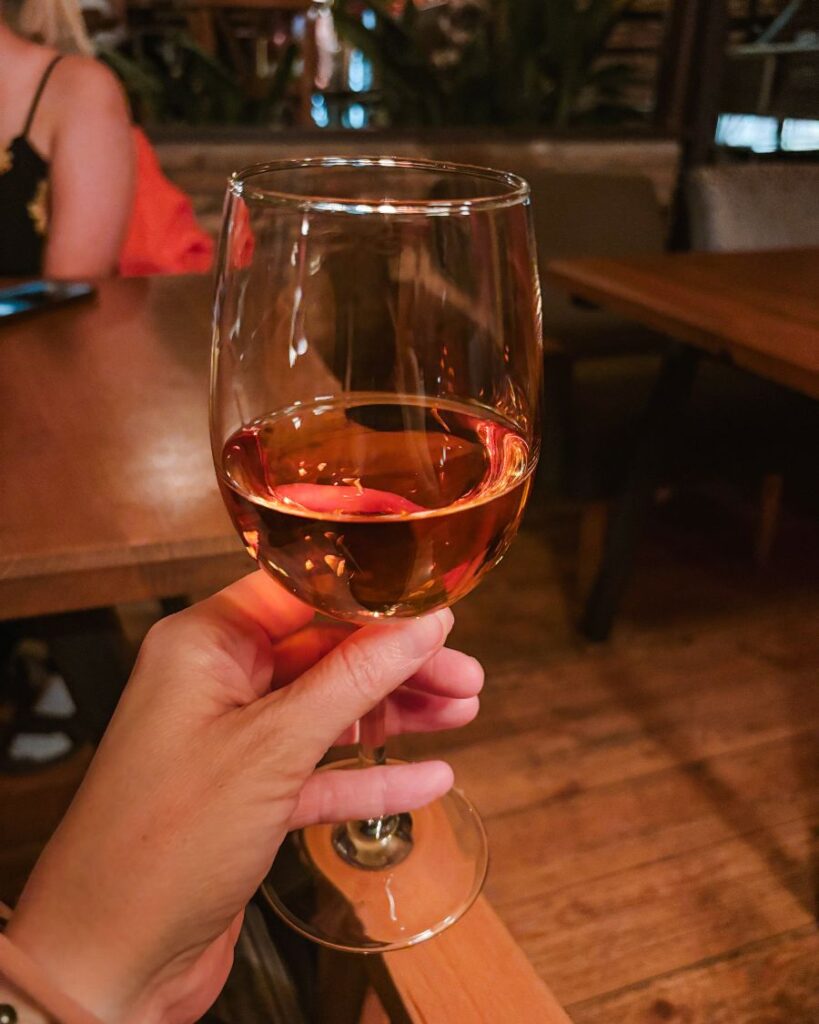
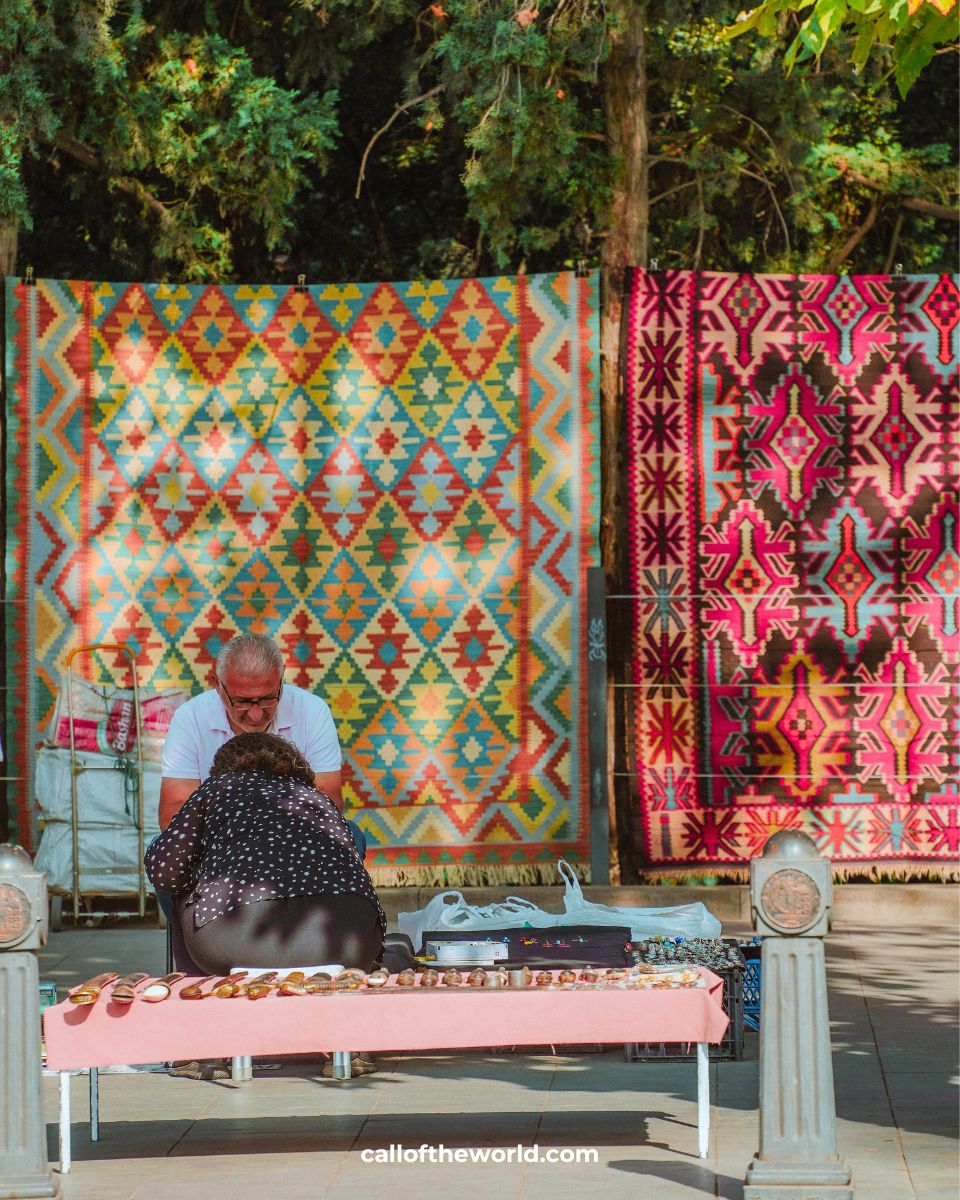
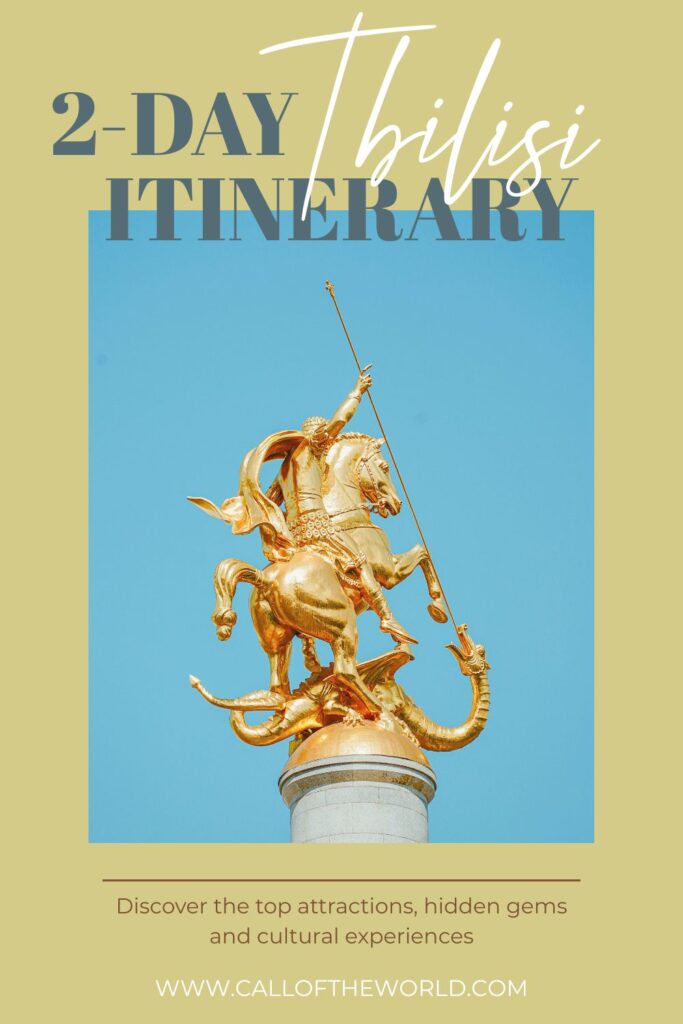

Where Next? Day Trips from Tbilisi
This post, What to do in Tbilisi, Georgia: 2-Day Itinerary, was about the capital city of Georgia. However, visiting Tbilisi is just the start of discovering this incredible country. There are also mountains, beaches, remote villages, isolated churches and much more to be discovered.
If you’d like to get out of the city, there are a number of providers offering day trips from Tbilisi. For example you could join this Day Trip to Kazbegi and Gudauri Including a Hotel Pick-up.
If you want a longer holiday, you can opt for a Private 7 Day Tour From Tbilisi: The Most Popular Tourist Destinations In Georgia.
Did you know that Tbilisi is very close to neighbouring Armenia? It’s possible to take a train or a bus to get there. If you’d like someone else to organise everything for you, try Day Trip to Armenia Including Homemade Lunch.
Day Trips from Tbilisi
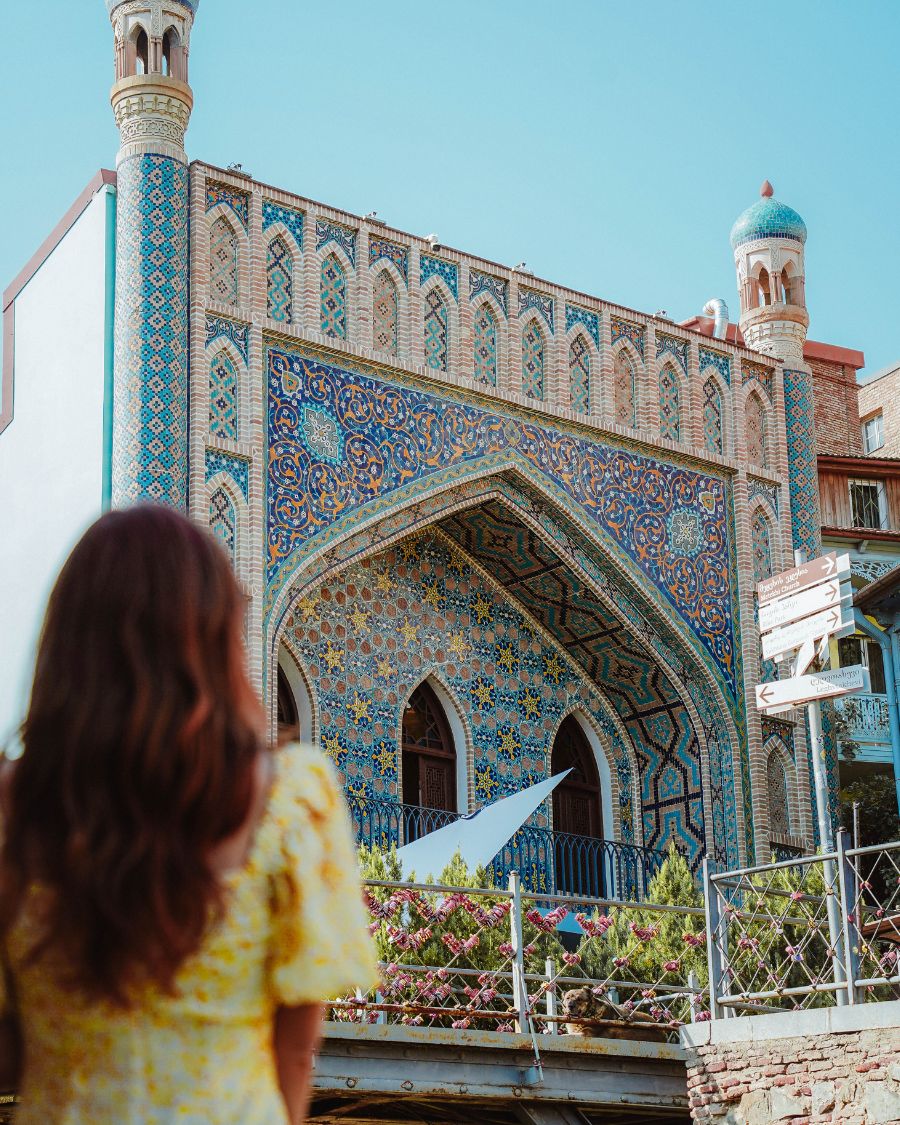
Group Tours to Georgia & Armenia
Unsure about travelling to Georgia or Armenia solo?
G Adventures offer small-group tours through Georgia, Armenia, and beyond. Perfect if you want to explore the region with like-minded travellers, local guides and zero stress.
Practical Guidance for Tbilisi, Georgia
Hopefully you have found this guide on What to do in Tbilisi, Georgia: 2-Day Itinerary useful. I have also included some practical guidance below so that you can get the boring stuff sorted and make the most of your trip!
Transport in Tbilisi, Georgia
Tbilisi is a very easy city to get around. I personally enjoy walking, especially in the old town area. The city wakes up very late (around 10-11am), so if you go for a walk in the early morning you’ll have the place almost to yourself! There’s also a good metro / subway system. This was built in the Soviet era and some of the metro stations are stunning.
The easiest way to get around Tbilisi is to use Bolt. Bolt is an Estonian-headquartered rideshare app (like Uber) that operates in a number of countries in Europe. I recommend downloading the app in advance before your trip so that you can set up the payment card etc. The best card to link in order to avoid high FX exchange fees is a WISE card (see below).
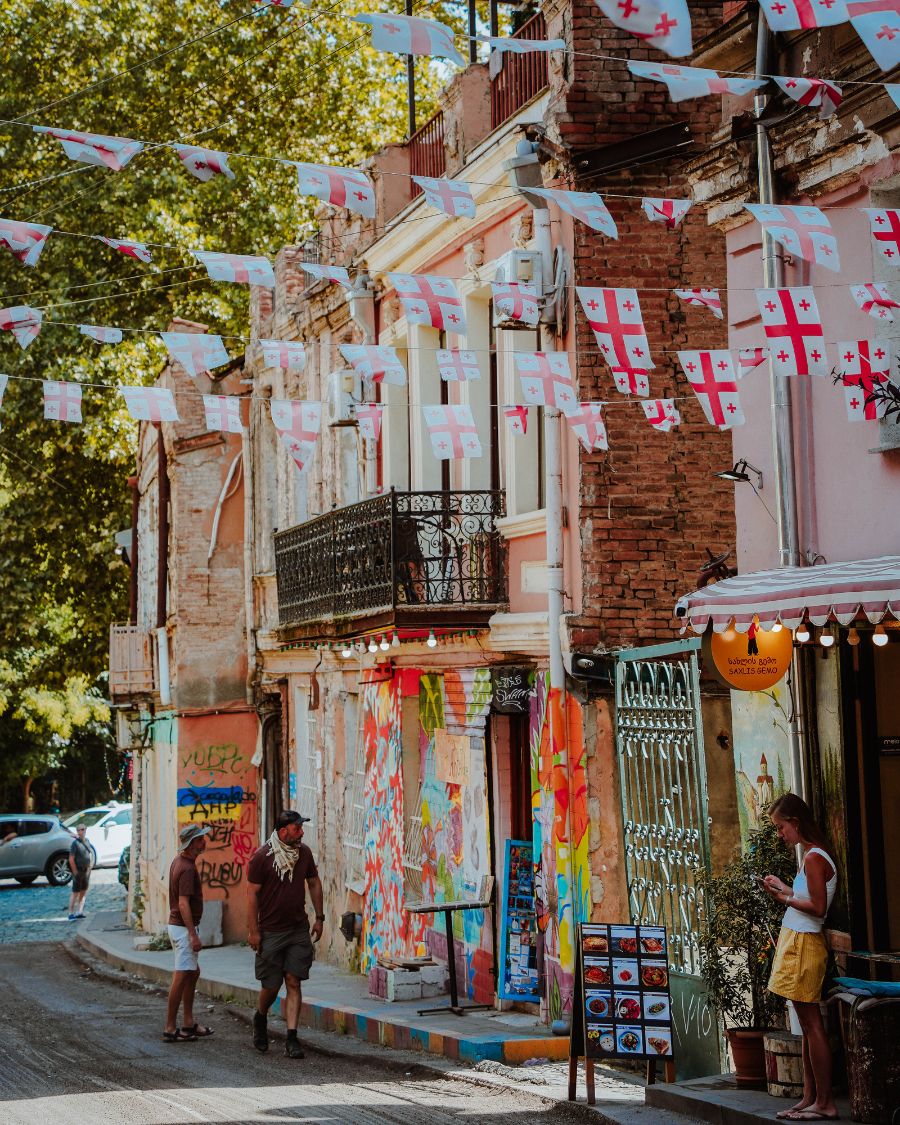
Withdrawing Cash in Georgia in Georgian Lari (GEL)
To withdraw cash at the best rates, I highly recommend getting a WISE card before you go. This allows you to convert money into Georgian Lari (or any other currency!) at the best rates and then withdraw cash in Georgia without hidden fees.
Wise is a UK-based financial services company (available in most countries worldwide) and is highly regulated in the various regions it operates in (in the UK it is authorised by the Financial Conduct Authority).
Get your WISE card here.
Travel Insurance
Make sure that you have travel insurance to cover you for your trip. I can highly recommend Heymondo. I use them to cover me for all my trips and their app is very easy to use. As a Call of the World reader you get 5% off below.
Purchase Heymondo travel insurance with a 5% discount.


Plan Your Trip to Georgia: Useful Resources
Planning your next trip? These are my ride-or-die travel tools — handpicked, tested, and essential. The smart stuff I actually use to book fast, travel safer, and stress less. I don’t gatekeep when it comes to travel!
Travel Insurance
- SafetyWingNomad-friendly, low-cost, and claim-friendly. Built for long-term travellers.
- Heymondo (5% off)Great app. Fast claims. Reader discount included.
Flights
- SkyscannerThe only tool I trust to find the cheapest flights in seconds.
Money & Banking
- WiseNo hidden fees, epic exchange rates — perfect for multi-country trips.
Accommodation
- Booking.comFree cancellation, last-minute deals — ideal for the flexible traveller.
Transport
- 12GoBuses, trains, ferries across Asia — easy, fast, and reliable.
- Welcome PickupsPrivate airport pickups with friendly local drivers. Book in advance and relax.
Tours & Tickets
- ViatorSkip the queue, book activities last-minute, cancel for free.
- G AdventuresSmall-group tours, ethical operators, great for solo travel.
eSIMs & Data
- AiraloDigital SIM cards you can activate instantly. No roaming bills, ever.
- Holafly (5% off with code “CALLOFTHEWORLD”)Unlimited data. 100+ countries. Set it up in 5 minutes.
- Saily (5% off with code “SPECIAL5”)Affordable eSIMs that just work, especially in Southeast Asia.
Stay Secure
- NordVPNBrowse safely on public Wi-Fi, access content globally, and stay private.
- ExpressVPNFast, reliable, and works in countries with heavy censorship.
✈️ Pro tip: Set these up before your trip so you can hit the ground running. Travel smarter, not harder.

Did you find this post useful?
If you fancy shouting me a cuppa to keep the travel stories flowing, click below!
☕ Treat Me to a Cuppa



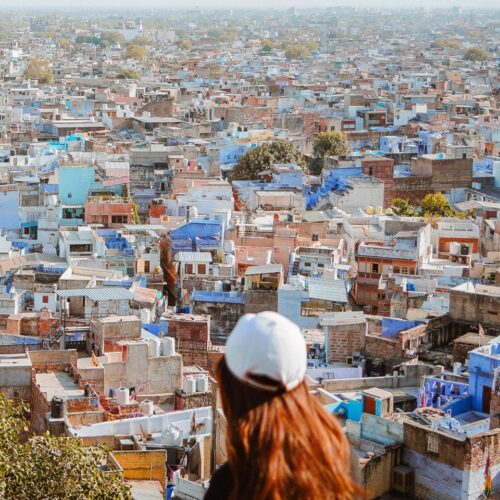

Leave a Reply